The ABC of Junior ISAs
The Junior Individual Savings Account (ISA) was introduced in 2011, 12 years after the launch of the original ISA in 1999, which recently celebrated its 18th birthday.
In a nutshell, the Junior ISA is a long-term, tax-free savings account for children. It effectively replaced the Child Trust Fund and aims to enable parents to save a tax-efficient nest egg for their children.
There are two types of Junior ISA and your child can have one or both types:
- A cash Junior ISA, where you won’t pay tax on interest on the cash you save.
- A stocks and shares Junior ISA, where your cash is invested and you won’t pay tax on any capital growth or dividends you receive.
Managing the money
Only parents, or guardians with parental responsibility, can open a Junior ISA for under 16s, but the money belongs to the child. Until the child turns 16, the parent can manage the account if they want to make changes. For example, they could change the account from a cash to a stocks and shares Junior ISA or change the account provider.
The child takes over control of the account when they turn 16 and they can access their money from age 18 (when the ISA automatically loses its ‘Junior’ status). Children aged 16 or older can open their own Junior ISA, as well as an adult cash ISA (with maximum contribution limits of £4,128 and £20,000 respectively, for the 2017-18 tax year
Paying into a Junior ISA
Anyone can pay into a Junior ISA, but the total amount paid in can’t exceed £4,128 in the 2017/18 tax year and £4,260 for 2018/19. If you go over this limit, the excess is held in a savings account in trust for the child and cannot be returned.
During the 2017/18 tax if you have paid £2,000 into a child’s Cash Junior ISA you can only pay £2,128 into their stocks and shares Junior ISA. You can make contributions into a Junior ISA until the child’s 18th birthday.
Contains public sector information licensed under the Open Government Licence v3.0.
The tax efficiency of ISAs is based on current rules.
The current tax situation may not be maintained. The bene t of the tax treatment depends on the individual circumstances. The value of your stocks and shares ISA and any income from it may fall as well as rise.
You may not get back the amount you originally invested.

